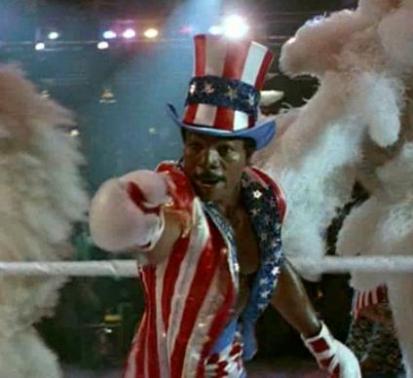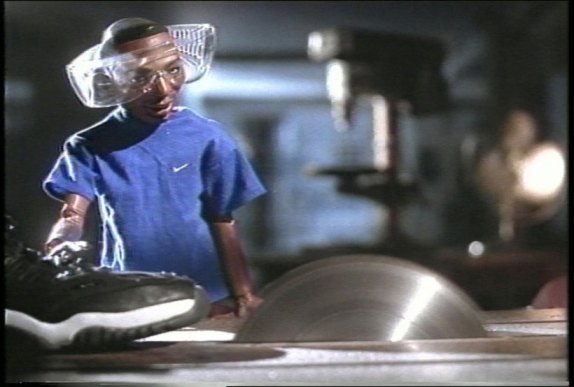Michael Jordan’s 1994 departure from basketball to pursue his dreams of playing baseball or serve a secret suspension, was supposed to signal a changing of the guard. The NBA’s hip-hop generation was poised to step up and lay claim to the throne. History tells us that Hakeem Olajuwon and a resurrected Jordan intervene, and the proverbial passing of the torch would have to wait for Jordan’s penultimate retirement in 1998. But what the post-Jordan, pre-Kobe superstars lack in championship hardware they more than make up for in broken dreams bad decisions cultural impact. This was the first generation of NBA players who grew up on hip-hop. More importantly the grew up watching Michael Jordan create the archetype of multimedia superstar. If His Airness could fight crime with Bo Jackson and Wayne Gretzky, why couldn’t they BE rappers.
While dozens of players tried their hand at the rap game, Shaq-Fu’s catalog excepted, very few official releases exist. Allen Iverson’s shelved “Jewelz” album has become the stuff of legend within hoops-rap circles, and Kobe Bryant’s Tyra Banks collaboration is a go-to punchline for honors-level Bean-bashers. Truthfully, most ballers didn’t have the time, energy, focus or font of creativity required to record long players. Listeners seeking a 30 minute+ dose of rapping athletes are forced to make do with the 1994 compilation “Basketball’s Best Kept Secret”.

Boasting production by such luminaries as DJ Clark Kent, Warren G, Ant Banks, Diamond D, “Basketball”s Best Kept Secret” doesn’t suffer from a lack of beats, but the question is “can these guys flow”? Luckily for you, I listened so you don’t have to. And now, without further ado, allow me to present an unsolicited, untimely, two-part, song-by-song review of a slightly obscure, largely unloved compilation of songs by amateur musicians:
Check It- Dana Barros
- What it sounds like: Brand Nubian before Grand Puba left
- The Flow: Sadat X channeled through Buckshot Shorty
- Basketball-related line: “Cross over? Hell no! Dana B’s paid”
- Lamest Stunt Line: “Cross over? Hell no! Dana B’s paid”
- Overall Rating: 7 out of 10. After Ed OG, it’s safe to say that Dana Barros is the second-best rapper to ever come out of Boston (nope, Brooklyn gets to claim Guru).
Lost in the Sauce- Malik Sealy
- What it sounds like: An athlete rapping over a beat that Mic Geronimo rejected
- The Flow: 1982. Think Kool Moe Dee and Kurtis Blow
- “Life’s just one big jump-shot/You’re either on or you might be off”
- Lamest Stunt Line: “I dunk it on you from the dotted” Really son, the dotted? A full 7 feet away from the rim?
- Overall Rating: 3 out of 10. This is kinda painful to listen to
Mic Check 1-2 – Shaq featuring Ill All Scratch
- Overall Rating: 6 out of 10. As a successful hip-hop artist, Shaq is a bit of a ringer here. His rap skills or lack thereof are a known commodity, so I’m going to expend a lot of energy thinking or writing about this. I will, however, say that Ill and Al Scratch are much better emcees than I remember them being.
Flow On- Cedric Ceballos featuring Warren G
- What it sounds like: Vintage G-funk, a warm summer day
- The Flow: Da Brat (that’s a compliment, btw)
- Basketball-related line: “Mary Jane ain’t the way for me/I get high up off me jumpers and my dunks, you see”
- Lamest Stunt Line: None that stand out. This is barbecue music, relatively free of braggadocio.
- Overall Rating: 9 out of 10. This could have been released as a single, and done pretty on commercial radio
Anything Can Happen- Brian Shaw
- What it sounds like: A gangstafied funeral dirge
- The Flow: MC Eiht (gyeah)
- Basketball-related line: none
- Lamest Stunt Line: none
- Overall Rating: 7.5 out of 10. Shaw is a comment, albeit derivative emcee. I might have scored it higher had it not been so damned depressing. In the song, Shaw talks abut the pain losing his entire family and how even his closest homies can’t relate. It’s real spit. A little too real, and I think I need to take a break from this album.
Stay tuned for Part 2.



 Posted by Management
Posted by Management 





